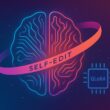RLHF and Natural Language Processing
Reinforcement Learning from Human Feedback (RLHF) is a popular approach in robotics that leverages human feedback to train robots. It has gained traction due to its ease of use and significant performance gains. RLHF is particularly effective in teaching robots to understand and respond to natural language commands, which introduces a new layer of complexity to the control of robotic systems.
Natural Language Processing (NLP) is a critical component of RLHF. It allows robots to understand and respond to human language commands, which is essential for effective human-robot interaction.
DROC: A New Approach to RLHF
A new approach to RLHF, known as Distillation and Retrieval of Online Corrections (DROC), has been developed to respond effectively to online human language corrections. DROC can distill generalizable knowledge from corrections and retrieve usable knowledge for future tasks
DROC is a large language model (LLM)-based system that can respond to arbitrary forms of language feedback, distill generalizable knowledge from corrections, and retrieve relevant past experiences based on textual and visual similarity for improving performance in novel settings
DROC is able to respond to a sequence of online language corrections that address failures in both high-level task plans and low-level skill primitives. It effectively distills the relevant information from the sequence of online corrections in a knowledge base and retrieves that knowledge in settings with new task or object instances
DROC outperforms other techniques that directly generate robot code via LLMs by using only half of the total number of corrections needed in the first round and requires little to no corrections after two iterations.
In addition, DROC leverages visual similarities of objects for knowledge retrieval when language alone is not sufficient. Experiments across multiple long-horizon manipulation tasks show that DROC excels at responding to online corrections, and adapting to new objects and configurations while consistently reducing the number of human corrections needed over time.
A DROC method is much faster than traditional Machine Learning (ML) and Deep Learning (DL) algorithms for teaching and adapting robots in new situations, but these classical AI tools can be combined with Human-Robot learning solutions to achieve better outcomes. .
- Efficient Use of Corrections: DROC effectively distills relevant information from a sequence of online corrections and retrieves that knowledge in settings with new task or object instances. This allows DROC to learn from fewer corrections and adapt more quickly to new situations compared to traditional ML and DL algorithms.
- Adaptability to Arbitrary Feedback: DROC can respond to arbitrary forms of language feedback, which can range from high-level human preferences to low-level adjustments to skill parameters. This flexibility allows DROC to adapt quickly to a wide range of corrections and situations.
- Integration of Visual Similarities: DROC leverages visual similarities of objects for knowledge retrieval when language alone is not sufficient. This allows DROC to understand and adapt to new tasks and environments more quickly than traditional ML and DL algorithms, which may rely solely on language-based feedback.
Enhancing Visual Retrieval
DROC method already leverages visual similarities of objects for knowledge retrieval when language alone is not sufficient. However, the visual retrieval process can be improved by integrating auto labeling techniques. These techniques can automatically label objects in a scene, providing a richer set of visual features for DROC to use in its retrieval process. This could enhance DROC’s ability to understand complex tasks and adapt to new settings.
Imroving Scene Understanding with Computer Vision Algorithms
DROC aims to understand the scene by distilling scene information from corrections. This process can be enhanced by integrating scene understanding algorithms from the field of computer vision. These algorithms can help DROC to better understand the context of the task, including the spatial relationships between objects, which can lead to more accurate task execution.
Integrating Multimodal Information
The integration of multimodal information, such as verbal (dialogue) and non-verbal (sensor/camera) data, can provide a more comprehensive understanding of the task at hand. This could enhance DROC’s ability to respond to complex tasks that require understanding beyond visual and textual data.In conclusion, the integration of advanced computer vision algorithms and auto labeling techniques can significantly enhance the performance and adaptability of the DROC method in robotics. These improvements can lead to more efficient and accurate task execution, as well as a greater ability to adapt to new and complex tasks.






